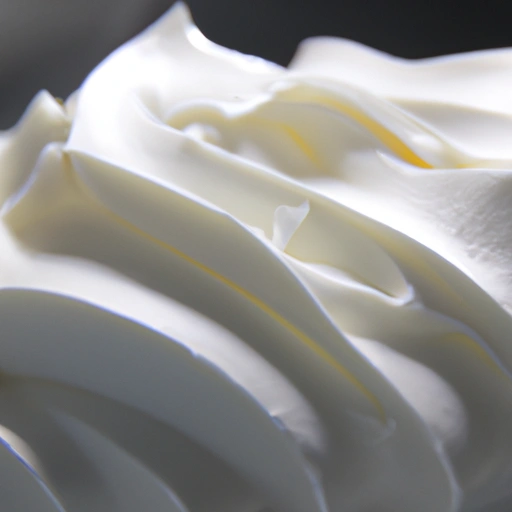Whipped Cream
Description

Whipped cream is a light and airy confection made by whipping heavy cream with a whisk or mixer until it becomes fluffy and voluminous. It is commonly sweetened with sugar and may also include flavorings such as vanilla, chocolate, or liqueurs. Whipped cream is used both as a topping and as an ingredient in a variety of desserts and some savory dishes.
In recipes, whipped cream quantities may be specified in different units, including grams (g), ounces (oz), milliliters (ml), cups (c), tablespoons (tbsp), and teaspoons (tsp). In the United States, whipped cream is often measured by volume (cups or tablespoons), while European and Asian recipes might use weight (grams or ounces) or volume (milliliters).
Common uses
Whipped cream is used as a garnish on desserts like pies, ice cream sundaes, and cakes. It is also folded into mousses, pastry creams, and frostings to add lightness. In some savory dishes, whipped cream is incorporated into sauces or soups to create a rich, smooth texture.
Nutritional value
Calories
Whipped cream typically contains approximately 35 calories per tablespoon (15 ml).
Protein
Whipped cream generally provides around 0.2 grams of protein per tablespoon (15 ml).
Fat
Whipped cream contains about 3 grams of fat per tablespoon (15 ml), most of which is saturated fat.
Carbohydrates
There are roughly 0.4 grams of carbohydrates per tablespoon (15 ml) of whipped cream.
Vitamins
Whipped cream contains small amounts of fat-soluble vitamins such as vitamin A and vitamin D.
Minerals
Whipped cream provides trace amounts of minerals like calcium and phosphorus.
Health benefits
While whipped cream is indulgent, it can contribute to your daily intake of calcium and vitamins A and D when consumed in moderation. Additionally, the pleasure of enjoying a dessert with whipped cream can have positive effects on overall well-being.
Potential risks
Due to its high saturated fat content, excessive consumption of whipped cream can lead to weight gain and may increase the risk of heart disease. Those with lactose intolerance or dairy allergies should avoid whipped cream.
Common recipes
Whipped cream is a classic component in recipes such as strawberry shortcakes, black forest cake, tiramisu, trifles, and pumpkin pie. It is also the key element in whipped cream frostings and chocolate mousses.
Cooking methods
The most common method of preparing whipped cream involves chilling the cream and beating it with a whisk or mixer until it forms soft or stiff peaks. It is important not to overbeat, as this can cause the cream to separate and turn into butter.
Pairing with other ingredients
Whipped cream pairs wonderfully with fresh fruits like strawberries, raspberries, and peaches. It complements the richness of chocolate desserts and adds a creamy counterpoint to the acidity of fruit pies and tarts.
Summary
Whipped cream is a decadent and versatile dairy product that can enhance both sweet and savory dishes. With its smooth texture and subtle sweetness, it's a favorite for chefs and home cooks around the world. When used in moderation, it can be part of a balanced diet, contributing small amounts of essential nutrients while elevating everyday desserts to something truly special.